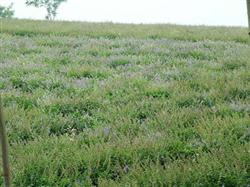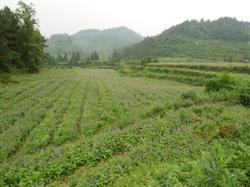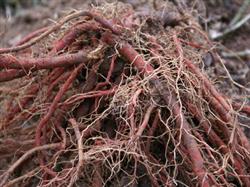How to manage planting Salvia miltiorrhiza?

How to manage planting Salvia miltiorrhiza? Please give introduction and guidance on the management of planting Salvia miltiorrhiza as follows: 1. It is usually carried out three times, the first in May, when the seedling height is about 15 cm, the second in June, and the third in August. 2. Topdressing at the right time. Topdressing combined with ploughing and weeding. 2000 kg of fully mature manure, 15 kg of superphosphate or 50 kg of cake fertilizer were applied per mu. In particular, it is necessary to re-apply the third topdressing, because during this period, topdressing is getting thicker and thicker, root growth and high yield are obtained. 3. Timely drainage and irrigation. Salvia miltiorrhiza is a succulent root plant, afraid of stagnant water, so it is necessary to dredge drainage ditches, eliminate stagnant water and prevent waterlogging. There is a large amount of water in seedling stage and seedling stage, so it should be watered in time in case of dry weather. 4. Pick flowers. In addition to keeping the seed land, the flower bolts must be cut off in batches to inhibit reproductive growth and promote root vegetative growth. This is another important measure to increase production of Salvia miltiorrhiza. Click to get more planting techniques of Salvia miltiorrhiza
- Prev

What are the methods of planting Salvia miltiorrhiza?
What are the methods of planting Salvia miltiorrhiza? Please introduce Salvia miltiorrhiza, also known as Radix Salviae Miltiorrhizae, which is the dried root of Radix Salviae Miltiorrhizae. It has the functions of dispelling blood stasis and relieving pain, promoting blood circulation and regulating menstruation, nourishing the heart and removing annoyance. Suitable for irregular menstruation, amenorrhea, ectopic pregnancy, hepatosplenomegaly, angina pectoris, restless.
- Next

How to control root-knot nematode disease of Salvia miltiorrhiza?
How to control root-knot nematode disease of Salvia miltiorrhiza? How is salvia miltiorrhiza root-knot nematode disease symptomatic? The control methods of root-knot nematode disease of Salvia miltiorrhiza can be referred to as follows: first, harm symptoms the disease harms the roots of Salvia miltiorrhiza. Nodular galls were found on the main root, lateral root and fibrous root, the main root and lateral root became thinner, and the fibrous root became more. On the gall.
Related
- Fuxing push coffee new agricultural production and marketing class: lack of small-scale processing plants
- Jujube rice field leisure farm deep ploughing Yilan for five years to create a space for organic food and play
- Nongyu Farm-A trial of organic papaya for brave women with advanced technology
- Four points for attention in the prevention and control of diseases and insect pests of edible fungi
- How to add nutrient solution to Edible Fungi
- Is there any good way to control edible fungus mites?
- Open Inoculation Technology of Edible Fungi
- Is there any clever way to use fertilizer for edible fungus in winter?
- What agents are used to kill the pathogens of edible fungi in the mushroom shed?
- Rapid drying of Edible Fungi

